Harlequins is a rugby club in the English Premiership. It was founded in 1866 and is one of the original clubs that founded the sport of Rugby Union in England.
Their grounds at the Twickenham Stoop are close to Twickenham Stadium, the home of English rugby. The team is also known as Quins.
Harlequins won the Gallagher Premiership in 2021 when they beat the former champions Exeter. This was only the second time that the London club had won the title. The first time was in 2012.
The club is owned by two investors. You can read more in our article on the owners of Harlequins.
Where Do Harlequins Play?
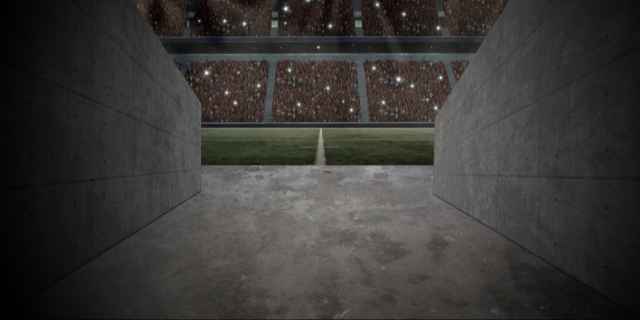
Harlequins home grounds are at the Twickenham Stoop. The stadium was formerly known as the Stoop Memorial Grounds, and nicknamed The Stoop.
The Stoop is in southwest England and is right beside the national rugby stadium.
For people traveling, the Twickenham train station is a short walk. The area is also well-served by buses.
History of The Stoop
Harlequins used to play in the grounds of Twickenham itself, which houses England’s international matches. They first leased those grounds in 1909.
However, the national stadium is so big that the club crowds could never fill the stands. It was felt that this hampered the match atmosphere.
The club acquired about fourteen acres of land across the road from Twickenham in 1963. They developed it first as a training ground, and then expanded it into a stadium.
The stadium was named the Stoop Memorial Ground after one of their most renowned players. You can read more about Adrian Stoop in a later section in this article.
It was officially renamed as the Twickenham Stoop in 2005. But most rugby supporters refer to the grounds as The Stoop.
Why Are Harlequins Rugby Called Harlequins?
The club was originally named the Hampstead Football Club when it was founded in 1866. They played in black and gold hoops.
There was a split in club members the following year, and some left to form a separate club named Wasps. The new club also kept the team colors. Of course, Wasps are still a great club rival!
The remaining members held their annual meeting in 1869 and decided on a change to their name. The reason was that the club had expanded its membership beyond Hampstead, and they didn’t want the name to tie them to the area.
However, the members wanted to retain the initials of HFC.
So, the club secretary produced a dictionary and started reading out the words beginning with H. Thankfully, he didn’t get past the “a”s. He paused at “Harlequins” and the members liked the sound of it.
Why are they Harlequins FC instead of Harlequins RFC?
You’ve probably noticed that many clubs have RFC after their name. This stands for Rugby Football Club. In contrast, soccer clubs just have FC after their names.
So, why is Harlequins FC the full name for Quins?
When football and rugby split completely to form two codes, many rugby clubs changed their name from FC to RFC.
But Harlequins had already been through a big name change (from Hampstead), and the members were strangely attached to the initials HFC. They asked for permission to keep the format, which was granted.
Harlequins Badge
The Harlequins badge features a masked dancing figure in multicolored clothing holding a sword above his head.
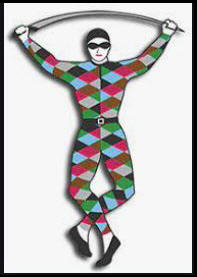
This figure represents the Harlequin name. Harlequin was a traditional character from comedy and pantomime theatre dating back centuries. He carries a wooden sword and wears a costume of many colors.
When the club committee picked the name out of a dictionary in 1869, there was an immediate association with this figure.
Harlequins Colours
When Wasps split from the Hampstead Rugby Club, they took the traditional club colors of black and gold.
When the remaining committee members decided on a new name of Harlequins, they also decided on new team colours.
The Harlequins colours are French grey, magenta, chocolate, and light blue. These are reversed on the back of the jerseys.
The original colour of their shorts (or “knickerbockers”) was dark blue. The minutes from a meeting in 1906 show that they were now playing in white knickerbockers.
Great Harlequins Players
Who are the greatest players to every play for Quins? It’s difficult to whittle this down to a top ten, but we’ve done our best!
Check out our round-up of the ten greatest former Harlequins players in history. We’ve only included players who are no longer with the club.
The most recent player on the list gets his own separate write-up – check out our article on Mike Brown.
How Much Do Harlequins Pay Their Players?
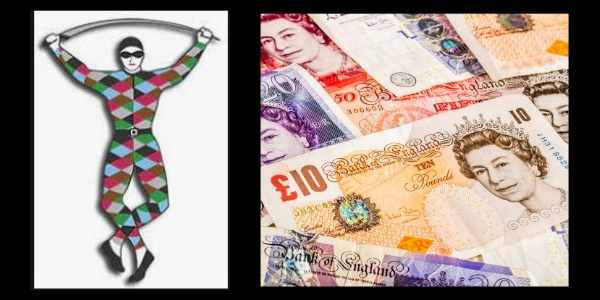
This is a question that is often discussed by fans. Player contracts aren’t public, but we’ve combed through leaks and statistics about the Premiership.
Check out our article on the salaries of Harlequins rugby players.
Harlequins Rugby Rivals
Wasps are the oldest rivals of Harlequins, and this was a London derby for over a century. Although Wasps have moved out of London, it’s still a traditional rivalry.
There are two other Premiership rugby clubs based in the wider London area. Saracens and London Irish are other London derbies with Harlequins.
Harlequins Clubs Around The World
The club minutes of 1906 record that the committee voted to permit a club in South Africa to use the Harlequins name and colors.
The Pretoria Harlequins are still in existence as an amateur club. They merged with the police rugby club in 2017 and are now known as the Quins-Bobbies.
Many years later, a club in Texas asked for similar permission. You can read more in our article on the Dallas Harlequins.
The club also has ties to the Kenya Harlequins and the Melbourne Harlequins.
Bloodgate
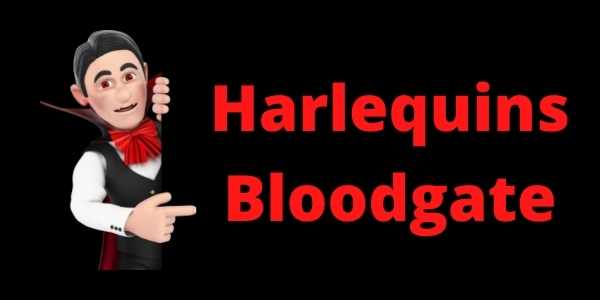
Part of the recent history of Harlequins includes an unfortunate episode known as Bloodgate. The club was fined heavily after events in 2009 and the coach received a three year ban from rugby.
You can read all about it in our article on Harlequins and Bloodgate.
History Of Harlequins Rugby
Harlequins played their first match against Clapton at Hackney Downs in 1867. The club was known as Hampstead at the time. The first written record of them playing as Harlequins was in The Field magazine in a match in 1869.
They didn’t play their neighboring rivals Wasps until 1872.
Influence on English rugby
Harlequins was one of the English clubs that met at the Pall Mall Restaurant in 1871 to discuss the formal rules of the sport. Clubs were still playing an amalgamation of rugby (hand) and soccer (foot) techniques, with different matches using different rules.
Blackheath and Richmond were there, and they are still in existence as big amateur clubs. Harlequins is the only club that would turn professional over a century later.
Are you wondering about Wasps? Well, the other London club should have been present. But the official history from the RFU says that “their party turned up at the wrong rendezvous on the wrong day at the wrong time.”
Rumour has it that the Wasps representative was in a public hostelry the night before…and didn’t leave.
Early years and players
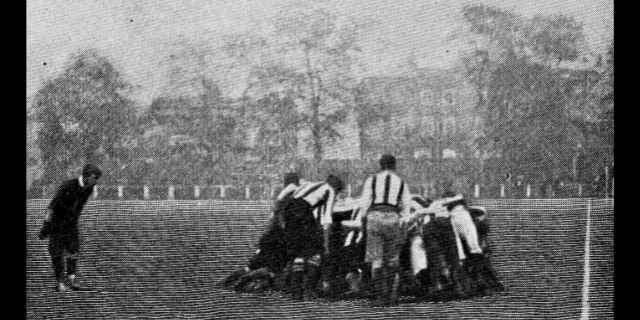
Harlequins wasn’t a major playing force in their early decades. However, they attracted some excellent players.
One of these was AE Stoddart, who captained England and went on the first tour by a unified British Isles team to Australia and New Zealand. This was the first Lions tour of 1886.
Their renowned halfback A.B. Cipriani played 195 games over a period spanning fifteen years. (As far as I’m aware, this is no relation to Danny Cipriani).
Notes from committee minutes from 1875 report that club captain W Watson was emigrating to California. The club wanted to get him a gift, and he had made it known that he’d like a revolver!
Adrian Stoop
The club fortunes turned on the field at the start of the 20th century as they continued to gather great players.
One of the greatest was A.D. Stoop, who made his Harlequins debut in 1901. His brother Tim also played for the club. A.D. had attended Rugby School and went on to captain the Oxford rugby team.
He played with Harlequins until 1939 (he was fifty-six when he hung up his boots).
Adrian Stoop was capped fifteen times for England and played 182 times for Harlequins. He would have had more international and club caps if it wasn’t for several collarbone injuries.
Stoop is credited with revolutionizing English back play. At the time, clubs played two half backs with little difference in their roles. One stood on the left and the other on the right.
Stoop recognized that Wales and New Zealand were developing different formations. He borrowed some ideas and introduced new techniques to Harlequins and England.
These were the differing roles and positions of scrum half and out half.
When the club developed their new home grounds, they called them after Adrian Stoop.
20th century
The club had some notable successes in the 1920s against touring international teams.
They beat the U.S. Olympics rugby team in 1924 when the Americans were preparing to defend their Olympic title. Harlequins also beat the All Blacks when they toured Britain in 1926.
When Rugby Union went professional in 1987, Harlequins joined the top professional tier in England.

They won the league Cup in 1988 and 1991. They also made three finals between 1992 and 2001, and were one of best clubs in the country.
21st century
Harlequins remained in the top tier until they were relegated in 2005. They dominated the lower division and bounced back up into the Premiership. They’ve been in the top flight ever since.
They had a strong season in 2011/12 and won the Premiership title by beating the Leicester Tigers. Quins went through a fallow period until the season fo 2020/2021.
They beat the title holders Exeter Chiefs in 2021 to become Premiership champions.